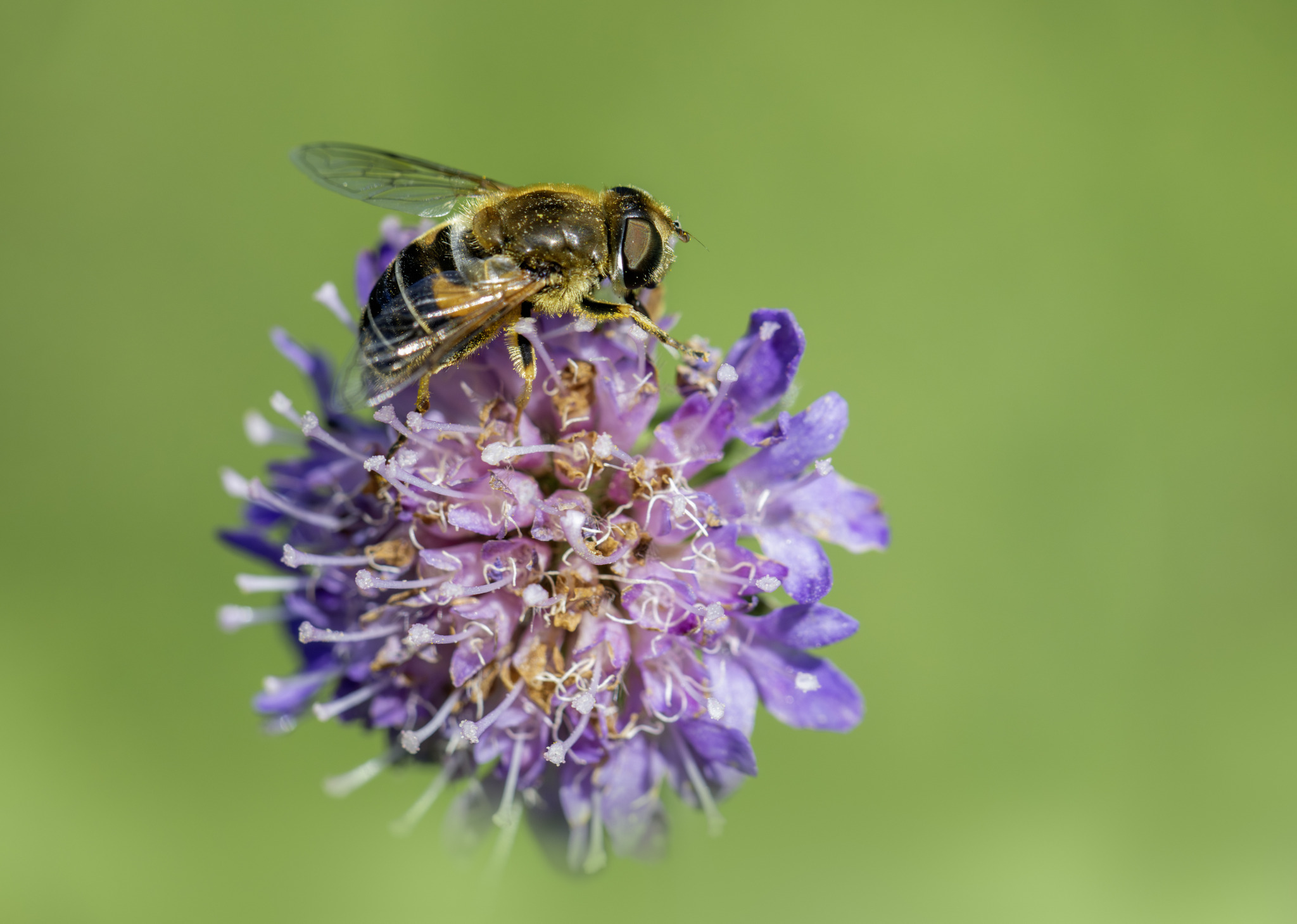The Tapered Drone Fly (Eristalis pertinax) is a species of hoverfly belonging to the family Syrphidae. It is often seen in gardens, parks, and meadows across much of Europe and parts of Asia.
Appearance
- Size: The Tapered Drone Fly is medium to large, with a body length of about 10 to 14 millimeters.
- Coloration: It resembles a honeybee or drone in its coloration and body shape, which serves as a form of mimicry to deter predators. The abdomen is black with orange or yellow bands on the second and third segments, and the thorax is typically a shiny, dark brown or black.
- Distinctive Features: The species can be identified by its long, tapered abdomen and the yellowish tarsi (the end segments of the legs), particularly the front and middle legs. The eyes are large and dark, often with a faint pattern or banding.
Habitat
- Distribution: Eristalis pertinax is widespread across Europe, from the British Isles to Scandinavia and south to the Mediterranean, and it can also be found in parts of Asia. It prefers a variety of habitats, including gardens, woodlands, hedgerows, and wetlands.
- Larval Habitat: The larvae, known as “rat-tailed maggots,” develop in stagnant water or moist, decaying organic matter. They have a distinctive long tail-like breathing tube that they use to breathe while submerged.
Behavior
- Flight Period: The Tapered Drone Fly is typically active from early spring (March) through late autumn (November). It is often one of the earliest hoverflies to appear in the year.
- Feeding: Adults are excellent pollinators and feed on nectar and pollen from a wide variety of flowering plants, particularly those with open, accessible flowers such as daisies, dandelions, and umbellifers.
- Mimicry: The species closely mimics honeybees in appearance, which helps it avoid predation by birds and other predators that may mistake it for a stinging insect.
Ecological Importance
- Pollination: As a frequent visitor to flowers, the Tapered Drone Fly plays a crucial role in pollinating many wild and cultivated plants.
- Larval Role: The larvae help in breaking down organic matter, contributing to nutrient cycling in their habitats.
Conservation Status
- Common and Widespread: The Tapered Drone Fly is not currently considered at risk. It is a common and adaptable species that thrives in various habitats, although it can be impacted by pesticide use and habitat destruction.
The Tapered Drone Fly is a valuable pollinator and a fascinating example of Batesian mimicry, using its resemblance to bees for protection while playing an important role in the ecosystem.
Visited 234 times, 36 visit(s) today
Views: 375
Subscribe to the newsletter:
